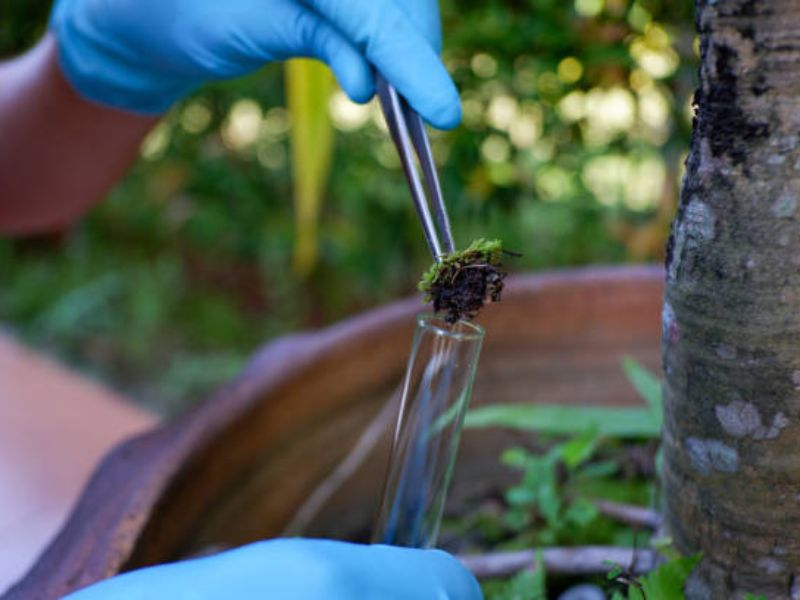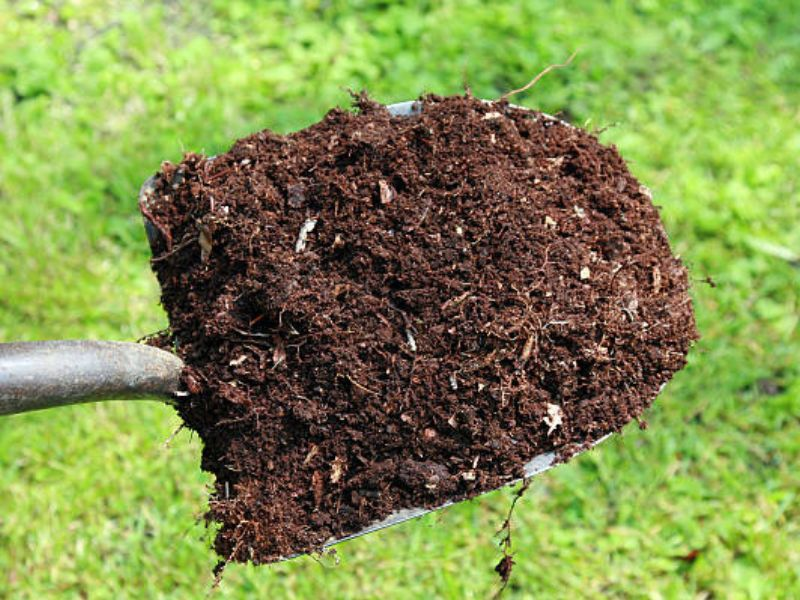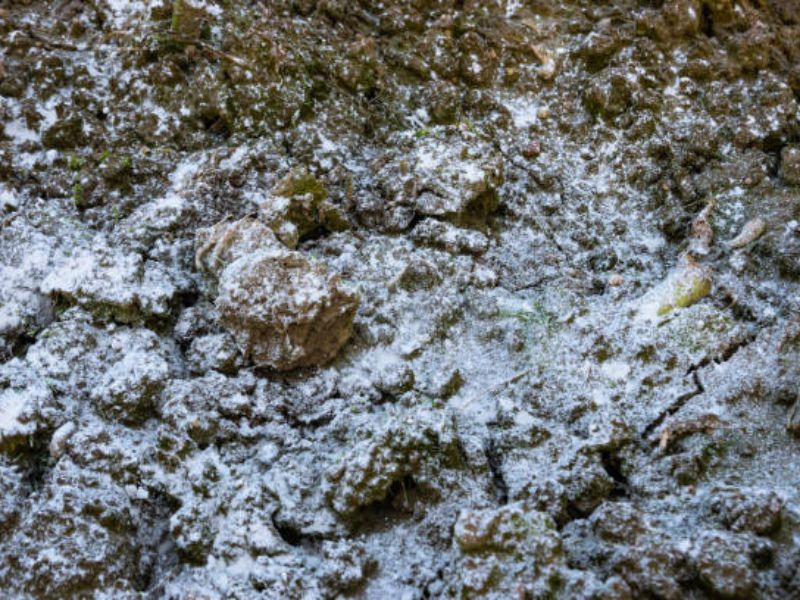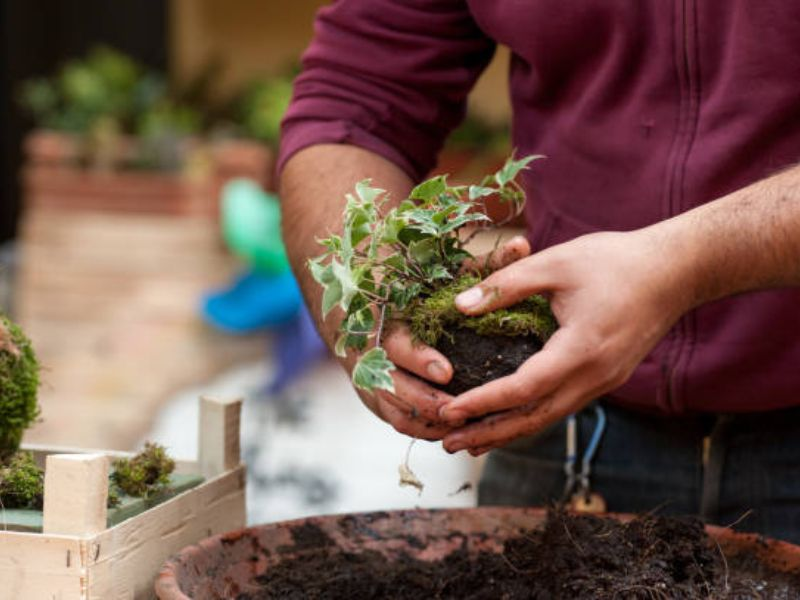Understanding soil amendments for bonsai is essential, as the importance of optimal soil quality in bonsai cultivation cannot be overstated. For these miniature trees, the soil is not just a foundation but a lifeline, dictating their health, vitality, and the aesthetic appeal they exude.
For bonsai, the unique shallow containers and the desired miniature size of the trees introduce challenges not seen in typical gardening. The limited amount of soil available to the bonsai makes its quality even more critical. It must support the plant, provide essential nutrients, drain well, and yet retain the right amount of moisture.
Bonsai Soil Basics

Given their miniature size and the artistry involved in their cultivation, the requirements for bonsai soil are even more unique and critical.
Let’s break down these requirements:
- Structure: Bonsai soil structure determines how well the soil can hold or drain water. A good mix ensures there’s enough space between soil particles for roots to breathe, yet it’s compact enough to retain essential nutrients.
- Soil pH: Bonsai trees generally thrive in slightly acidic to neutral soil. However, depending on the specific species of the bonsai, slight pH adjustments might be needed.
- Soil Aeration: Aeration refers to the soil’s capacity to provide the bonsai roots with the necessary oxygen. Good aeration supports root health, promoting growth and reducing the risk of root rot.
Now, when we talk about soil types:
- Sandy Soils: Characterized by large, coarse particles, sandy soils offer excellent drainage.
- Clay Soils: Dominated by tiny, fine particles, clay soils are dense and can hold water well.
- Garden Soils: Garden soils are typically a mix of sand, silt, and clay.
Given these distinctions, bonsai enthusiasts often create custom soil mixes, blending various components, often with the inclusion of soil amendments, to achieve the desired soil qualities tailored for their specific bonsai species.
Defining Soil Amendments
In the realm of gardening and plant cultivation, soil is seldom perfect right from the start. Enter the saviors of many a gardener: soil amendments. But what exactly are these essential components?
Soil amendments are materials added to the soil to improve its physical properties, making it more conducive to plant growth. This can involve enhancing soil structure, aeration, moisture retention, and drainage capabilities, among other traits.
There are two main categories of soil amendments:
- Organic Amendments
- Inorganic Amendments
Given the constraints of the bonsai pot and the precision required in bonsai cultivation, achieving the right soil balance is paramount. And often, that balance can only be realized with the aid of these amendments.
Why Soil Testing is Crucial for Bonsai

One doesn’t just shape and prune the tree to perfection; it’s also about ensuring the tree’s health and vitality from the ground up. Soil plays a fundamental role in this, and knowing exactly what’s going on beneath the surface is crucial.
Herein lies the significance of soil testing.
Identifying the Need for Soil Testing Tailored to Bonsai Care
- Nutrient Balance: Just as humans need a balanced diet to thrive, bonsai trees require a specific set of nutrients in the right proportions. Soil testing reveals the nutrient content, helping enthusiasts identify which nutrients are abundant and which ones are lacking.
- pH Levels: As mentioned in the previous sections, bonsai trees thrive in slightly acidic to neutral pH levels. Soil tests can pinpoint the exact pH, guiding decisions on whether to use soil amendments for bonsai like agricultural lime or peat moss to adjust it.
- Soil Composition: Knowing the ratio of sandy soil to clay soil or the amount of organic matter present can inform decisions about water frequency, aeration needs, and more.
- Early Problem Detection: Soil tests can help detect potential issues, such as the presence of pathogens or toxic substances, before they manifest visibly in the tree.
The Process of Taking Soil Samples and Understanding the Results
- Collecting the Sample: Using a clean tool, extract a small amount of soil from various locations within the bonsai pot. Combine these samples for a more comprehensive snapshot of the overall soil condition.
- Sending to a Lab: Many gardening centers and agricultural institutions offer soil testing services. Once you send in your sample, they will analyze it for nutrient content, pH levels, and more.
- Interpreting Results: Once the test results are back, they often come with a breakdown of nutrient levels, pH, and sometimes even recommendations. For bonsai, it’s essential to compare these results against the ideal conditions for your specific tree species.
- Making Informed Decisions: With a clear understanding of your soil’s current state, you can now make informed decisions about which soil amendments are needed. Whether it’s adding organic materials to boost nutrient content or inorganic amendments to adjust pH, the results guide your next steps.
Organic Amendments for Bonsai Soil

An essential aspect of achieving this pinnacle of soil quality lies in the incorporation of soil amendments for bonsai, particularly organic amendments. These natural, organic materials provide a host of benefits, ranging from improved soil structure to enhanced nutrient content, crucial for robust bonsai growth.
- Composted Manure: Derived from decomposed animal waste, composted manure is a sought-after organic amendment in both traditional garden soil and specialty mixes like bonsai.
- Benefits:
- Nutrient Boost: Rich in essential plant nutrients, it enhances the soil’s nutrient content, fostering optimal plant growth.
- Moisture Retention: It increases water retention capabilities, a boon for bonsai trees potted in sandy soils.
- Soil Microbes Introduction: Composted manure teems with beneficial soil microbes, aiding in nutrient absorption and fostering a vibrant soil food web.
- Benefits:
- Peat Moss: Sourced from ancient peat bogs, this organic material is revered for its water-holding capabilities and its ability to adjust soil pH.
- Benefits:
- Water Retention: Its unique structure aids sandy soils, allowing them to hold moisture more effectively, pivotal for bonsai trees in small pots.
- pH Adjustment: Peat moss can lower soil pH, catering to bonsai species that prefer slightly acidic soil.
- Soil Aeration: Ensures a loose and aerated soil structure, beneficial for bonsai root growth.
- Benefits:
- Wood Chips: Beyond their role as a mulch in vegetable gardens, wood chips find utility in bonsai soil mixes too.
- Benefits:
- Aeration: Wood chips create spaces between soil particles, preventing compacted soil and promoting aeration.
- Nutrient Release: As they decompose, they release nutrients back into the soil, a gradual process beneficial for the soil food web.
- Temperature Regulation: They help maintain consistent soil temperature, fostering steady plant growth.
- Benefits:
The Role of Organic Matter in Bonsai Soil
Organic matter, encompassing decayed plants and animal materials, is foundational for fertile garden soil amendments.
In bonsai:
- Soil Structure Improvement: Organic amendments, whether it’s composted manure or other organic materials, enhance soil structure. They reduce soil compaction, aid in water drainage, and boost moisture retention.
- Healthy Root System: With improved soil aeration from organic materials, bonsai trees develop a robust root system, crucial given their limited growth space.
Inorganic Amendments: Enhancing Bonsai Soil Characteristics

While organic amendments are often lauded for their multifaceted benefits, inorganic amendments too play an instrumental role in sculpting the ideal environment for bonsai growth. These non-organic materials, usually derived from mineral sources, offer solutions to specific challenges posed by bonsai soil.
- Agricultural Lime: Often simply referred to as “lime,” agricultural lime is a powdery white substance primarily composed of calcium carbonate.
- Benefits:
- pH Modification: Lime is a well-regarded solution for elevating the pH of acidic soil. When the soil pH is too low, lime can be introduced to shift the balance, making the soil more alkaline. This is crucial as certain bonsai species thrive in a more neutral to slightly alkaline soil.
- Calcium Infusion: Being calcium-rich, it provides this essential nutrient to the soil, promoting sturdy cell walls in the growing plants.
- Improved Soil Structure: Particularly for clay soils, lime can improve soil structure, making it less compact and more conducive to root penetration.
- Benefits:
- Sand Particles: While not a nutrient provider, the addition of coarse sand can have transformative effects on the soil’s physical characteristics.
- Benefits:
- Improved Drainage: Sand aids in soil aeration and drainage, especially in soils that tend to retain too much moisture.
- Soil Structure Enhancement: For bonsai trees in pots with compacted soil, sand can loosen up the soil, promoting healthier plant roots and plant growth.
- Benefits:
- Other Inorganic Amendments: Beyond lime and sand, there’s an array of inorganic amendments that cater to unique bonsai needs. Gypsum, for instance, can improve soil structure without altering pH. Perlite, with its porous nature, can boost soil aeration without affecting soil pH.
Addressing pH Adjustments for Bonsai with Inorganic Compounds
While organic materials like peat moss can be used to make soils more acidic, inorganic compounds, such as lime or sulfur, cater to both ends of the pH spectrum.
Knowing when and how to use these soil amendments for bonsai is key to ensuring that bonsai trees receive the nutrients they need. Regular soil testing can guide these decisions, enabling accurate interventions.
The Microbial Life Beneath the Bonsai
Beneath the surface, an unseen universe teems with life, playing a pivotal role in the bonsai’s health and vitality. This subterranean realm, home to numerous soil microbes, operates on symbiotic relationships, known collectively as the soil food web.
Understanding the Soil Food Web
Just as ecosystems above ground have their intricacies, the soil food web paints a complex picture of life below the soil surface. From bacteria and fungi to larger organisms like earthworms, each entity has a role to play.
Benefits:
- Nutrient Recycling: As organisms break down organic matter, they release essential plant nutrients, making them available for bonsai roots.
- Soil Structure Enhancement: The activity of these microbes aids in creating a well-aerated soil, beneficial for bonsai root growth.
- Disease Suppression: A balanced microbial community can suppress soil-borne diseases, creating a healthier environment for the bonsai.
Organic Fertilizers and Soil Microbes
Unlike synthetic counterparts, organic fertilizers provide nutrients in a form that’s accessible to both plants and soil microbes. These fertilizers, derived from natural sources like aged manure or composted materials, ensure a sustained release of nutrients.
Benefits:
- Microbial Food Source: Organic fertilizers serve as a food source for microbes, ensuring their proliferation.
- Balanced Nutrient Release: These fertilizers decompose slowly, ensuring a steady nutrient supply without overwhelming the soil or the bonsai.
- Promotion of Beneficial Organisms: Some organic fertilizers can boost the population of specific beneficial microbes, further enhancing soil health.
Organic Amendments: Bolstering the Microbial Environment
Organic amendments, be it composted manure, peat moss, or wood chips, aren’t just about improving soil texture. They’re a lifeline for the microbial community.
Benefits:
- Diverse Microbial Introduction: Introducing other organic materials can increase microbial diversity, ensuring a robust soil food web.
- Improved Habitat: These amendments can create a favorable environment for microbes, with adequate moisture, air, and food.
- Protection Against Extremes: Organic matter can buffer the soil against extreme conditions, ensuring the microbial community’s survival.
Applying Soil Amendments to Bonsai: Best Practices

One of the nuanced steps in this dance is understanding the intricacies of applying soil amendments. When done correctly, these amendments can significantly elevate the health and aesthetics of a bonsai. However, improper application can lead to undue stress and potential harm to the bonsai.
Best Practices
Here are best practices to ensure a harmonious blend of existing soil and new amendments:
- Recognizing the Need: A soil test is a reliable way to assess the soil pH, nutrient levels, and overall health. These results will guide the type and quantity of amendments needed.
- Choosing the Right Amendment: For instance, to improve soil structure, one might opt for peat moss or sand particles, whereas pH adjustments might require agricultural lime or sulfur.
- Timing Matters: The best time to apply most soil amendments is during repotting. This allows for thorough mixing and minimal disturbance to the bonsai’s roots.
- Gentle Incorporation: When introducing any amendment, care must be taken to avoid damaging the delicate plant roots. For top dressing, sprinkle the amendment over the soil surface and gently work it in, ensuring it doesn’t become compacted.
- Monitoring Watering Needs: Soil amendments can influence the water retention of the bonsai’s soil. For example, peat moss can retain moisture, whereas sand enhances drainage.
- Ensuring Compatibility: It’s essential that the existing soil and the introduced amendments work in harmony. Overloading the soil with too many amendments can do more harm than good.
- Regular Monitoring and Adjustment: Regularly inspecting the tree for signs of stress or nutrient deficiency and conducting periodic soil tests can guide subsequent amendment applications.
The application of soil amendments to bonsai, when done with attention and care, can rejuvenate the soil, ensuring it provides an optimal environment for the bonsai to flourish. As with all aspects of bonsai care, knowledge, observation, and a gentle touch are key.
The Continuous Journey of Bonsai Soil Care

Central to this journey is the practice of soil amendment—the careful adjustment of the soil’s composition to better support the bonsai’s health.
Here’s a deeper dive into the ever-evolving nature of bonsai soil care:
- Evolving Needs: Just as a bonsai grows and changes with time, so do its soil’s needs. Over time, the once perfect soil blend may no longer meet the tree’s requirements, signaling the need for common soil amendments.
- Periodic Reviews: Regular soil testing is essential. By understanding the soil’s current state, cultivators can decide which soil amendments are required, whether these are changes to the soil structure, pH adjustments, or the introduction of new nutrients.
- Listening to the Bonsai: Sometimes, the bonsai itself will signal that something is amiss. Yellowing leaves, stunted plant growth, or a lack of vigor can all indicate soil-related issues.
- Amendment as a Routine: Rather than waiting for evident soil or plant issues, proactive bonsai enthusiasts integrate soil care into their regular routine.
- The Long View: Bonsai cultivation is a long-term commitment. As such, soil care isn’t a one-time task but an ongoing endeavor.
- Embrace the Journey: There’s a profound joy in tuning into the bonsai’s needs, tweaking the soil composition, and witnessing the results.
In the intricate tapestry of bonsai cultivation, soil care is a thread that weaves through every aspect, including the thoughtful selection of soil amendments for bonsai. It’s an ever-evolving journey that reflects the beauty, challenges, and rewards of nurturing a bonsai.





0 Comments